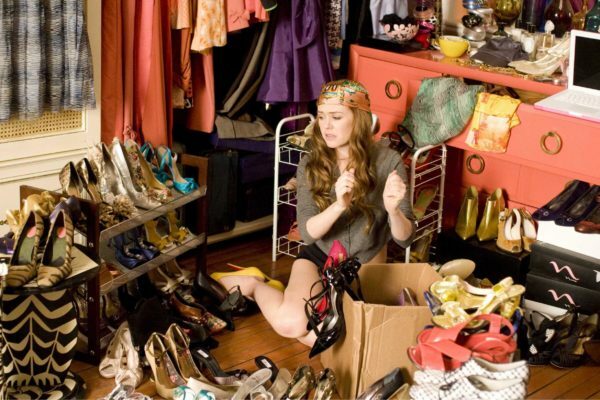A new epidemic has captured millions of people. Happiness began to consist in buying another thing in order to fill an already full closet, or even more than one! Selfishness and consumer behavior have reached their peak. What are the symptoms of the 21st century plague and can it be fought?

What are the reasons?
Shopaholics have found common signs. I recommend carefully studying the list compiled by a psychologist.
- Lack of self-confidence, constant search for attention to one’s person.
- Lack of communication with like-minded people.
- The desire to stand out from the crowd at all costs.
- The feeling of loneliness leads to large shopping centers, dulling in the crowd.
- The need for emotions, fresh impressions.
Large brands target these pain points and create the illusion of exclusivity. Polite consultants can replace ordinary social communication. Their techniques work especially well on overly intelligent people: it seems awkward to refuse a person who has spent so much time on you. But that's their job! Don’t deceive yourself, sellers receive bonuses and premiums for our purchases; it is vitally important for them to get into the buyer’s wallet and pull out the maximum amount.

Now psychologists teach from an early age to be able to firmly say “no.” This is a useful ability that allows you to avoid problems with alcohol, drugs, smoking and intrusive salespeople.
Aggressive advertising awaits us at every corneru: buy, buy, buy! It acts on different channels of perception, encouraging the purchase of unnecessary things. Cunning tricks dull analytical abilities.
People with a soft character and without a critical view of things are most prone to shopaholism. In second place is a dysfunctional childhood, children's complexes. For example, if a child grew up in cramped conditions, then he later compensates for the lost sweets and toys. There is also the opposite situation, when a spoiled child cannot stop, continuing to surround himself with a mountain of things in adulthood.
How to recognize addiction
There are a number of signs of a shopaholic, so I suggest you take a short test. A “yes” or “no” answer is enough, and then I’ll tell you how to decipher the results.

- You constantly look through fashion magazines and catalogs of various stores.
- Going to the store is not accompanied by clear goals.
- There is a strong desire to buy a new product for no reason.
- You talk at length about your purchases, savoring the details.
- Consider all products, even those that are not needed.
- Without visiting stores, you fall into a state of apathy.
What answers are there more? If “yes” answers prevail, then you should stop running around the shops and think about the internal reasons.
You need to understand yourself what exactly pushes you to make purchases: lack of love and attention, loneliness, depression or emptiness in life?
Negative consequences

- Even a crowded room does not stop the need to buy.
- This addiction is akin to alcohol or smoking, which consumes the lion's share of the budget. If you count the expenses on unnecessary things, then the amount would be enough for a trip to the sea!
- Wasting the family budget will sooner or later lead to conflicts.
Bright types of shopaholics

- Spontaneous type – often buys things for no reason, cannot pass by a sale indifferently, but is sure that he does not suffer from shopaholism.
- Conscious type – will buy the necessary thing, but in large quantities. For example, several creams on sale. He constantly accumulates bonuses and always buys at discounts.
- A true shopaholic - All the money goes to purchasing things.
How to fight, and is there a cure?

A real psychologist will never recommend shopping to relieve stress! The state of obsessive shopping desire requires correction. First, let's start with general recommendations:
- Keep a separate notebook or file with accounting. We set spending limits and carefully record expenses.
- It's harder to spend cash, stop using your card.
- Start going to the store with a list, it will discipline you and prevent spontaneous purchases.
- Put money into a piggy bank.
Promotions and discounts were invented to increase the check, you need to forget about them. Remember, a good habit takes 21 days to form. Then it will become easier, and we will begin to manage our money wisely, without succumbing to the charm of the trading floors.


 0
0





